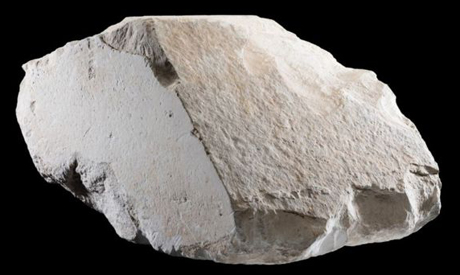
The block that the National Museum of Scotland claims is part of the Great Pyramid's casing
The supervisor-general of Egypt's Antiquities Repatriation Department, Shaaban Abdel-Gawad, has told Ahram Online that Egypt will send an official inquiry to Scotland asking for a certificate of possession and export documents for a casing stone purportedly from the Great Pyramid of Giza.
The BBC reported earlier today that the National Museum of Scotland in Edinburgh will display on 8 February a casing stone from the Great Pyramid of Khufu, which will be displayed for the first time outside of Egypt along with other ancient Egyptian artefacts.
Abdel-Gawad said that the Egyptian law for the protection of antiquities stipulates that trading or exporting antiquities is a crime, and if the block is found to have been smuggled out the country, all procedures will be taken to return it home.
Renowned Egyptologist Zahi Hawass asserted to Ahram Online that the block could not be from the Great Pyramid, whose outer layer was destroyed over the centuries.
“There is no image showing the casing of the Great Pyramid," Hawass said, adding that the outer layer of the pyramid was made of granite, like the pyramids of Khafre and Menkaure, and not of limestone as the National Museum of Scotland claims.
Hawass added that the only remaining casing from the Giza pyramids is found at the top of the Khafre pyramid and the lower part of the Menkaure pyramid.
Short link: